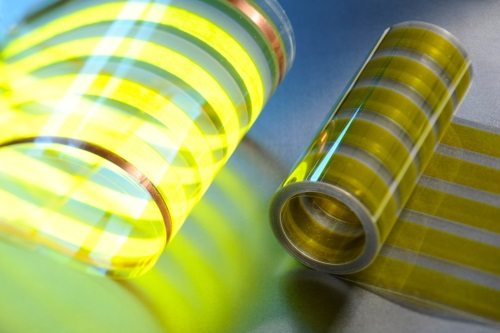Based on OLED technology and implemented using a printing machine, VTT Technical Research Centre of Finland Ltd has provided an opportunity to create patterned and flexible light-emitting surfaces on advertising displays, info signs and lighting fixtures, for instance.
The method also enables transparent smart surfaces to be attached to window panels or packaging.
Organic light-emitting diode (OLED) technology is commonly used in mobile phone displays and television sets, though until now has only been found in glass surfaces, implemented using traditional microelectronics manufacturing methods.
Using VTT’s method, OLED elements can now be printed not only onto glass or steel surfaces but also onto flexible plastic films, enabling significantly larger light surfaces and expanding the usage possibilities of the technology.
The center says this type of light-emitting plastic film and processing in ambient atmosphere has not been created before on this scale.
Traditional printing methods such as gravure and screen printing, enabling very large production volumes, are used for manufacturing OLED light surfaces.
Production is, therefore, possible in facilities such as traditional printing houses.
Manufactured using the gravure and screen printing methods, OLED light surfaces are around 0.2 mm thick, and include electrodes and polymer layers measuring up to a few hundred nanometres, in which the light emission occurs. This phenomenon is called electroluminescence; it entails an organic semiconductor emitting light in an electric field.
The luminosity of OLED (lm/W) amounts up to about one third of an LED’s luminosity.
While OLED emits light throughout its entire surface, LED is a spotlight technology.
At this point, VTT’s plastic OLED film will only emit light for around a year, since light-emitting polymer materials are susceptible to oxygen and moisture.
In the future, the film’s lifespan will increase as the development of screen protectors continues and the film’s application possibilities grow.
“The plastic film is optimally suited to advertising campaigns, in which large light-emitting surfaces can be used to draw significantly more attention than can be gained through mere printed graphics or e-ink-type black-and-white displays that do not emit light,” says Head of Research Area Raimo Korhonen from VTT.
It is also possible to use OLED light as a transmitter in wireless data transfer, which opens up new possibilities for utilizing printed light surfaces in Internet of Things applications.










